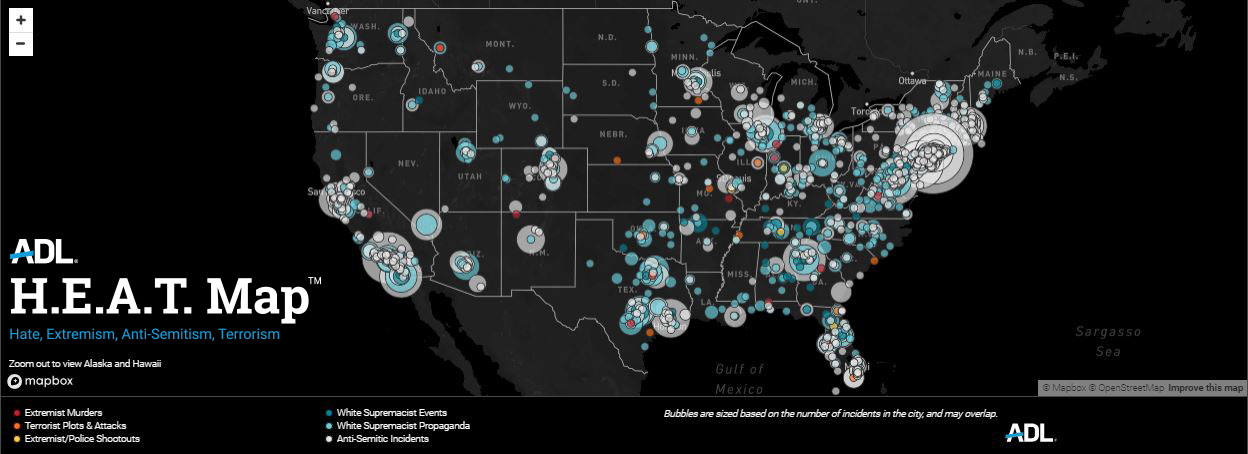
In advance of the first anniversary of the violent white supremacist rally in Charlottesville, Va. that shook the nation, the Anti-Defamation League (ADL) launched the ADL H.E.A.T. (Hate, Extremism, Anti-Semitism, Terrorism) Map ™ — a first-of-a-kind interactive map detailing extremist and anti-Semitic incidents in the U.S., including specific incidents in Colorado, New Mexico and Wyoming.
“It’s important to remember that extremist activity is not just confined to one specific town in Virginia, but rather an issue faced by communities every day across our region and the country,” said ADL Mountain States Regional Director Scott L. Levin. “As extremists continue to spread hate and incite violence, ADL is committed to exposing their efforts and fighting to stop the hate they aim to spread.”
The ADL H.E.A.T. Map ™ is accompanied by a report that evaluates the ways the white supremacist movement — and the “Alt-Right” in particular — has changed in the year since the Charlottesville rally and provides a full overview of the complicated current state of white supremacy. Among the trends observed, the Alt-Right has embraced podcasts as a way to reach followers. White supremacist podcast audiences are not large by the standards of mainstream podcasts but represent significant audiences for white supremacists.
Additionally, white supremacists have increased on-campus and off-campus propaganda efforts in the past year. Since the beginning of 2017, ADL’s Center on Extremism has tracked more than 900 white supremacist propaganda incidents, from distributions of white supremacist literature to display of white supremacist handbills, posters, and more. The 2017-18 school year saw a 77 percent increase of incidents on campus from the previous academic year, with 292 cases reported, compared to 165 in 2016-2017. The report documented 13 incidents of white supremacist propaganda distribution in Colorado on eight campuses across the state. There were five reported incidents on three campuses in Wyoming and one incident on one campus in New Mexico.
The initial data in the new map consists of more than 4,500 data points representing a range of extremist activities, including:
■ Extremist-related murders (2008-2017)
■Terrorist plots and attacks (2002-2017)
□ Right-wing: 2002-2017
□ Islamist: 2002-2017
□ Left-wing: 2008-2017
■ Extremist shootouts with police (2008-2017)
■ White supremacist propaganda on and off campus (Fall 2016-to date)
■ White supremacist rallies (2017-2018)
■ Anti-Semitic incidents (2016-2017)
The map allows users to see the types of tactics extremists use, read details on specific incidents, compare activity by type and or state, and access and download raw data.

